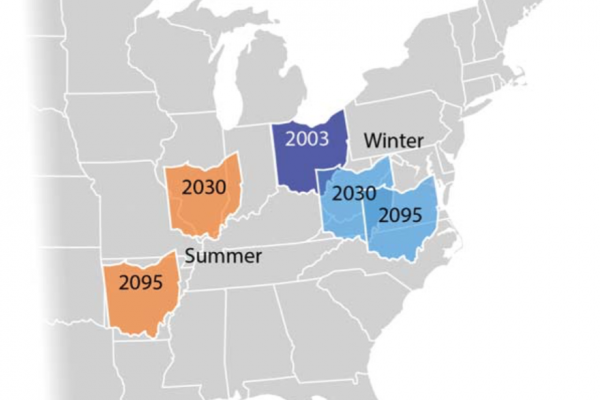Collaborative Venture Results in Look at Climate Changes and Impacts in Columbus, Ohio

![]() A collaborative venture of the Byrd Polar and Climate Research Center, City of Columbus, and GLISA has resulted in a two-page summary for Columbus, Ohio of climate change impacts already being felt and impacts anticipated this century if emissions continue on their current trajectory. We are already seeing impacts on a local level in Ohio: Between 1951 and 2012, the average temperature in Columbus warmed by 2.3°F, faster than the national and global rates; total precipitation increased by 19.8%, similar to changes observed in other major Ohio cities; and heavy precipitation events, days that exceeded 1.25 inches of precipitation, increased by 32%. Within the Midwestern United States, Ohio is projected to be exposed to additional warming of 3-5°F and more extreme precipitation by the middle of this century, putting it at risk of additional heat stress, seasonal water shortages, decreased air and water quality, greater flood risk, ecological changes and related negative agricultural impacts.
A collaborative venture of the Byrd Polar and Climate Research Center, City of Columbus, and GLISA has resulted in a two-page summary for Columbus, Ohio of climate change impacts already being felt and impacts anticipated this century if emissions continue on their current trajectory. We are already seeing impacts on a local level in Ohio: Between 1951 and 2012, the average temperature in Columbus warmed by 2.3°F, faster than the national and global rates; total precipitation increased by 19.8%, similar to changes observed in other major Ohio cities; and heavy precipitation events, days that exceeded 1.25 inches of precipitation, increased by 32%. Within the Midwestern United States, Ohio is projected to be exposed to additional warming of 3-5°F and more extreme precipitation by the middle of this century, putting it at risk of additional heat stress, seasonal water shortages, decreased air and water quality, greater flood risk, ecological changes and related negative agricultural impacts.
Climate is fundamental to human environmental interactions, and the emerging reality of human-induced climate change disruption will impact the economy, agriculture/food security, health, and well-being. A vulnerabilities assessment is currently being completed by the team and should be released in early 2016.
The two-page summary can be downloaded here.
Additional coverage of this topic can be found in The Columbus Dispatch.
